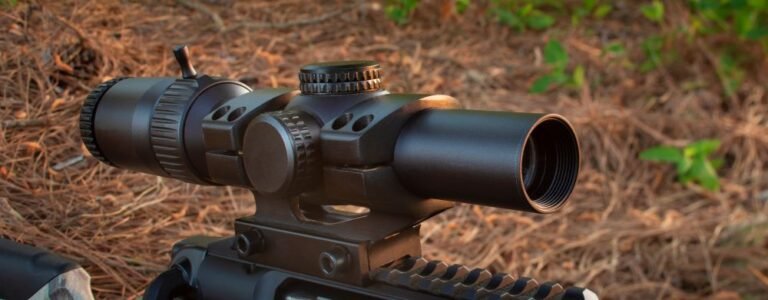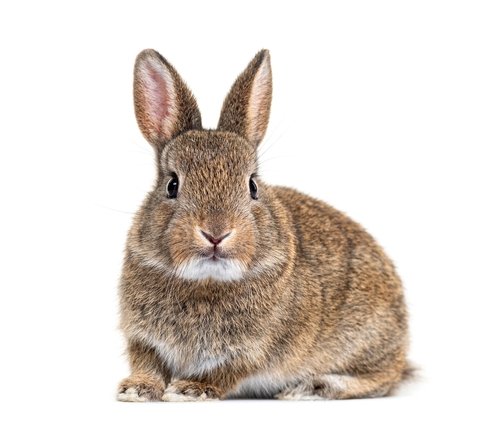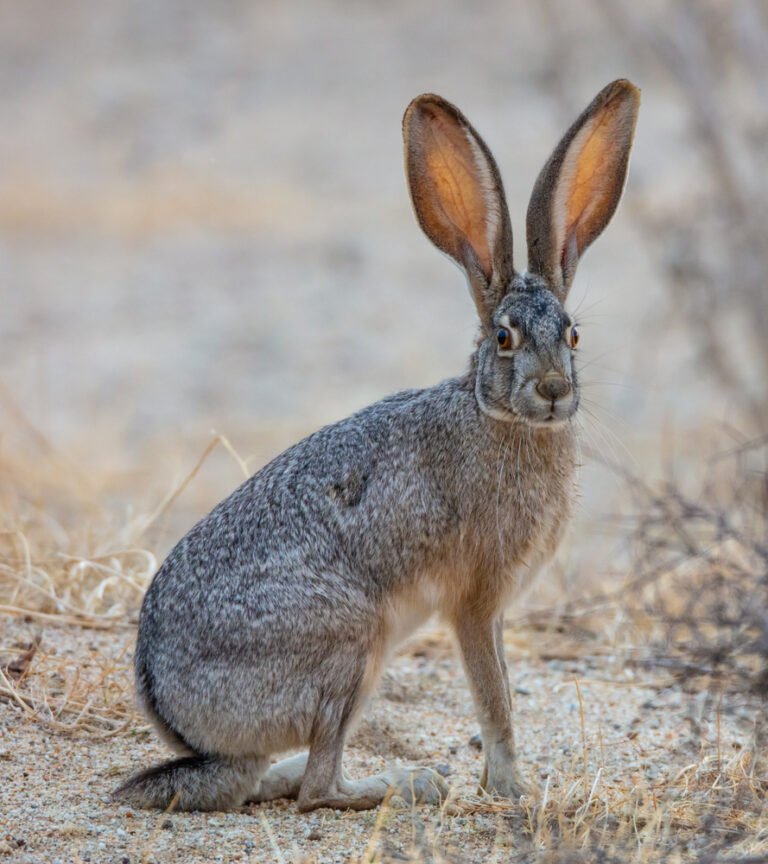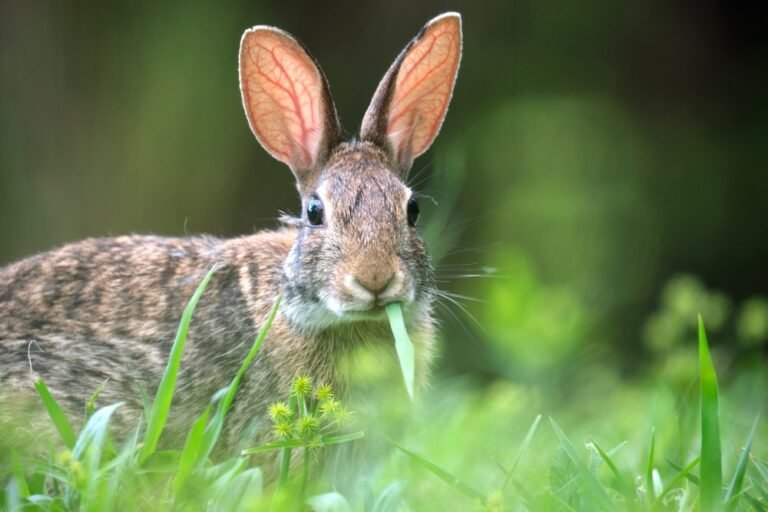Do You Want to Be A Skilled Rabbit Hunter?
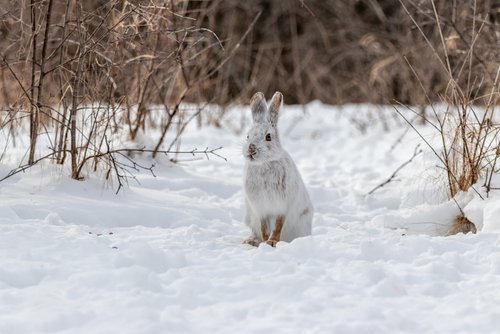
Rabbit hunting, a time-honored activity practiced by outdoor enthusiasts and hunters alike, involves pursuing rabbits in their natural habitats to harvest them for various purposes. Whether driven by sport, food, or wildlife management initiatives, rabbit hunting offers an exhilarating experience that combines skill, patience, and appreciation for nature.
This article delves into the multifaceted world of rabbit hunting, exploring its definition, importance as a recreational pursuit and sustenance source, and historical significance.
Importance of Rabbit Hunting
Rabbit hunting is pursuing rabbits with various hunting techniques to capture or kill them. It serves both recreational and practical purposes.
As a popular outdoor pastime, rabbit hunting provides individuals with an opportunity to immerse themselves in nature while honing their tracking skills and marksmanship. The thrill of the chase, combined with the satisfaction of a successful hunt, makes rabbit hunting an engaging activity for many outdoor enthusiasts.
Furthermore, beyond its recreational aspects, rabbit hunting has significant practical importance. Historically, rabbits have been hunted for their meat and fur since ancient times when they were considered a valuable food source.
Today, wild rabbits continue to be appreciated for their lean meat, which is high in protein and low in fat. In regions where wild game consumption is part of culinary traditions or where access to fresh organic meat is limited, rabbit hunting provides an ethical means of acquiring sustainable food.
Historical Significance of Rabbit Hunting
The history of rabbit hunting traces back centuries across different cultures worldwide. In ancient civilizations such as Egypt and Rome, rabbits were commonly hunted not only for sustenance but also for cultural rituals and sporting events. Traces of this historical significance can be found in various works depicting scenes from rabbit hunts.
Rabbit hunting also played a pivotal role in the colonization of new territories. European settlers brought their hunting traditions, including rabbit hunting, to the Americas, where rabbits were abundant.
These settlers relied on rabbit meat as a fundamental source of sustenance during their arduous journeys and while establishing communities in unfamiliar lands. Moreover, rabbits have been an integral part of indigenous cultures for thousands of years.
Native American tribes utilized various hunting techniques to capture rabbits for food and clothing. The skillful methods employed by these tribes reflected not only their deep understanding and respect for nature but also their resourcefulness in utilizing all available resources.
Rabbit Species and Habitats
Overview of different rabbit species commonly hunted
Rabbit hunting enthusiasts encounter a diverse array of species in their pursuit. Three of the most commonly hunted rabbits are the Eastern cottontail, European rabbit, and Snowshoe hare. Each of these species possesses unique characteristics and provides hunters with distinct challenges.
Eastern cottontail
The Eastern cottontail, a native to North America, is renowned for its widespread distribution and adaptability. Its small size, ranging from 14 to 19 inches in length, makes it an elusive target.
This species boasts soft fur that blends seamlessly with its surroundings, offering superb camouflage against predators and hunters alike. Primarily nocturnal by nature, Eastern cottontails often emerge during dusk or dawn to forage for their preferred diet of grasses, herbs, fruits, and bark.
European rabbit
Originating from Spain and Portugal, the European rabbit has earned a reputation as a challenging quarry due to its wariness and agility. These rabbits exhibit impressive speed when startled or pursued.
With an average size between 16 to 20 inches long, they possess distinctive long ears characteristic of the Leporidae family. Their preferred habitats include open grasslands or scrublands, where they can find ample cover in shrubs or burrows excavated by their strong claws.
Snowshoe hare
A true denizen of colder climates like North America’s boreal forests, the Snowshoe hare is a marvel of adaptation to its wintry surroundings. Its most striking feature is its oversized hind feet, which assist in traversing deep snow. These hares undergo a fascinating transformation during winter, changing their fur color from brown to pure white as a protective camouflage mechanism.
Snowshoe hares are primarily crepuscular and active during dawn and dusk. Their preferred habitats include dense forests with understory vegetation, such as coniferous or mixed forests, where they find nourishment through twigs, bark, and buds.
Understanding the distinct characteristics and habitats of these rabbit species lays the foundation for successful hunting endeavors. As we delve further into the article, we will explore the various techniques and strategies hunters employ to pursue these elusive creatures.
Hunting Techniques
Traditional Methods Used in Rabbit Hunting
Rabbit hunting has a rich history that dates back centuries, and traditional methods have been passed down through generations of hunters. One such method involves the use of beagles and other scent hounds to track rabbits.
These highly skilled dogs have an exceptional sense of smell and are trained to detect the scent of rabbits, leading hunters right to their hidden burrows. Beagles, with their compact size and remarkable agility, are particularly well-suited for this task.
Another traditional hunting technique that remains popular is using a shotgun as the primary firearm choice for close-range shots. Shotguns offer several advantages when hunting rabbits, primarily due to their spread shot pattern.
At close distances, this shot pattern provides a wider margin for error while increasing the chances of hitting a moving target. Additionally, shotguns are less likely to damage the game meat compared to high-velocity rifle rounds.
Modern Approaches to Rabbit Hunting
While traditional methods continue to thrive in rabbit hunting circles, modern approaches have also gained popularity among hunters seeking new challenges or increased success rates. One such approach involves the use of electronic game calls specifically designed to attract rabbits.
These devices emit realistic rabbit distress sounds or mating calls that can pique a rabbit’s curiosity or trigger its natural instincts, making it more susceptible to being hunted. In addition to electronic game calls, utilizing camouflage clothing has become increasingly prevalent among modern rabbit hunters.
The concept behind camouflage is simple but effective: blending into one’s surroundings enhances concealment and reduces the chances of alerting wary rabbits. Specialized camouflage patterns designed for various terrains allow hunters to blend seamlessly with their environment while increasing their chances of getting within close range undetected.
Overall, these modern approaches complement traditional techniques rather than replace them entirely. By combining time-honored methods with innovative strategies, hunters can adapt to different situations and environments while maximizing their chances of success in the pursuit of rabbits.
Essential Gear for Rabbit Hunting
Firearms and Ammunition Selection for Different Scenarios
Choosing the right firearm and ammunition for rabbit hunting is crucial to ensure a successful and ethical hunt. Shotguns are the most commonly used firearms due to their versatility in close-range shots. When selecting a shotgun, one must consider factors such as gauge, choke, and shot size.
The gauge refers to the bore size of the shotgun, with 12-gauge being the most popular choice for rabbit hunting due to its effectiveness and availability of ammunition. However, 20-gauge shotguns can also be suitable for those who prefer a lighter firearm.
The choke of a shotgun determines the spread pattern of pellets when fired. For rabbit hunting, it is recommended to use an improved cylinder or modified choke as they provide a good balance between range and pellet density.
As for shot size, #6 or #7½ lead shot is commonly used as it strikes a balance between providing enough stopping power while avoiding excessive damage to meat. For those who prefer rifles over shotguns, calibers suitable for small game hunting should be considered.
Popular choices include .22 Long Rifle (.22 LR) or .17 HMR (Hornady Magnum Rimfire). These calibers offer precise shooting at longer distances while minimizing unnecessary damage to small game like rabbits.
Clothing and Accessories Necessary for Comfort
When venturing into the wilderness on a rabbit hunt, wearing appropriate clothing is essential not only for comfort but also safety. Boots play a vital role in providing protection against rugged terrain and harsh weather conditions.
Opting for waterproof boots ensures your feet stay dry even in wet environments such as marshlands or rainy days. Insulated boots are also beneficial during colder seasons when temperatures can drop significantly.
Additionally, good traction is important to maintain stability while traversing uneven terrains. Look for boots with durable outsoles designed to provide optimal grip on various surfaces, including grassy fields, muddy paths, or slippery rocks.
Another essential accessory for rabbit hunting is a hunting vest. These vests are designed with multiple pockets to conveniently carry gear such as ammunition, knives, maps, and any other necessary tools.
Moreover, selecting a vest in blaze orange color significantly enhances visibility and ensures safety by distinguishing hunters from prey. For a successful and enjoyable rabbit hunting experience, it is crucial to equip oneself with the right gear.
The choice of firearms and ammunition depends on individual preferences and the hunting scenario. Shotguns with appropriate gauges and chokes paired with suitable shot sizes are commonly preferred among hunters.
Alternatively, rifles chambered in small game calibers like .22 LR or .17 HMR can offer precision shooting at longer ranges. Additionally, wearing appropriate clothing such as waterproof insulated boots for comfort and safety, along with a blaze orange hunting vest for visibility play an important role in ensuring a memorable hunt while also adhering to ethical practices.
Preparing for a Successful Hunt
Scouting techniques to identify prime rabbit habitats
When it comes to rabbit hunting, proper scouting is the key to success. Identifying prime rabbit habitats requires a keen eye and understanding of their preferences. One effective technique is locating food sources such as clover patches or agricultural fields.
Rabbits have a voracious appetite for clover, and these plants provide them with both sustenance and cover. Agricultural fields, especially those with crops like corn or soybeans, are also attractive to rabbits due to the abundance of food and protective cover provided by the tall vegetation.
In addition to food sources, identifying tracks, droppings, or burrows can be invaluable in determining rabbit activity. Rabbit tracks appear as small paw prints in soft soil or snow, often resembling an elongated oval shape with four toes at the front and one at the back.
Fresh droppings are small pellets that resemble black beans and indicate recent rabbit presence. Burrows are another sign of rabbit activity; they are typically found near dense cover like brush piles or thickets and serve as their shelter from predators.
Seasonal patterns to optimize hunting success
To truly optimize hunting success during different seasons, understanding the seasonal patterns of rabbits is crucial. In springtime, rabbits become more active as they eagerly feed on newly sprouted vegetation after a long winter. This period offers excellent opportunities for hunters as rabbits tend to venture out into open areas more frequently during daylight hours.
As summer approaches and temperatures rise, rabbits tend to be less active during the hottest parts of the day but become more active during early morning or late evening when it’s cooler. They seek shade and water sources to escape the heat but can still be spotted near their preferred feeding areas if one knows where to look.
During fall and winter months when food becomes scarce due to natural vegetation dying off, rabbits become more reliant on human-planted crops and brush piles. Hunting during these seasons near agricultural fields or strategically placed feeding stations can significantly increase the chances of a successful hunt.
Conclusion
Rabbit hunting requires thorough preparation and careful observation to increase the likelihood of a successful hunt. By scouting for prime rabbit habitats, including food sources like clover patches and agricultural fields, as well as identifying tracks, droppings, and burrows as signs of rabbit activity, hunters can gain valuable knowledge about their target’s whereabouts.
Understanding seasonal patterns is equally important to optimize hunting success, as it allows hunters to adapt their strategies based on rabbits’ behavior during different times of the year. With dedication and a comprehensive approach towards preparing for rabbit hunting, enthusiasts can embark on memorable adventures in the great outdoors.
Remember, patience and attention to detail are key virtues when it comes to this noble pursuit. So gear up, study your surroundings, and embrace the thrill of rabbit hunting while fostering an appreciation for nature’s wonders along the way.

